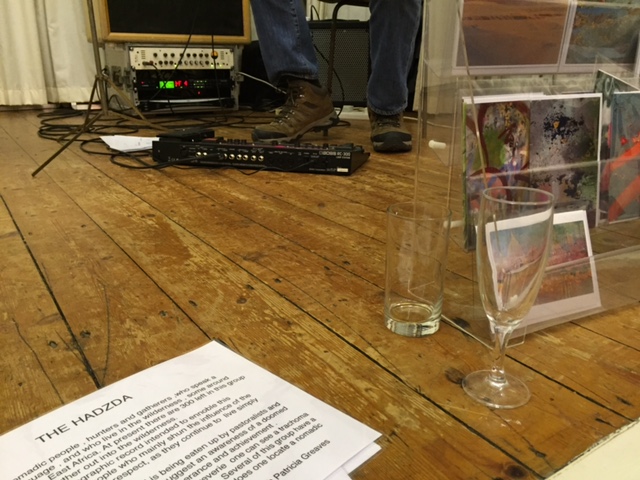On Friday, I went to the Grantchester Artists Show in the Grantchester Village Hall. And I bought two paintings!
There was live music (a good-mood-spreading electric jazz'n'rock guitarist), champagne and art. And lots and lots of people.
 |
| Detail from Katherine Firth's Garlic & Onions, oil on board |
 |
| Tess Recordon's painting Winter (oil) and Penelope Hayes' 2gether (ceramic) |
Most exciting of all, I found two paintings that I loved and I bought them!
 |
| Alan Coulson, From Chanctonbury Ring |
This is Alan Coulson's acrylic painting From Chanctonbury Ring. That red dot is mine! This is a very small and very atmospheric, totally lovely and mysterious sun-and-shade-drenched landscape.
 |
| Vera Rosenberry, Osprey and Chair |
This is Vera Rosenberry's watercolour painting Osprey and Chair. The red dot is also mine! There is a quirky predator bird, an enigmatic shadow, magical perspective, a chair painted in loving detail, a circular moon that draws the shadows rather than casts them, and an overall wonderful dream-making atmosphere.
 |
| My paintings in situ! You can see their respective sizes. :-) |
I am so excited about my two purchases. I pick them up later today. There is nothing quite like the rush from art buying, an economic transaction like no other as it also involves the soul and the heart.
 |
| Detail from Vera Rosenberry's Chough and Chair (a chough, pronounced 'chuff', is a bird from the crow family) Don't you love this chough's expression? |
Unfortunately, I'm posting this a little late for my readers to rush out and visit but I absolutely recommend a visit to the next Grantchester Artists Show.
Shall I post pictures of what these paintings look like on my walls?






